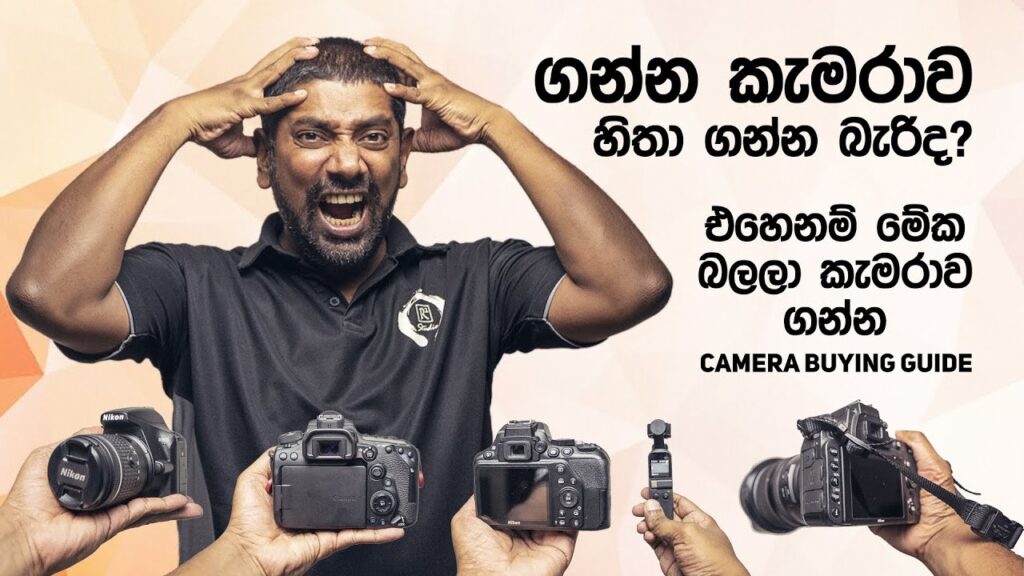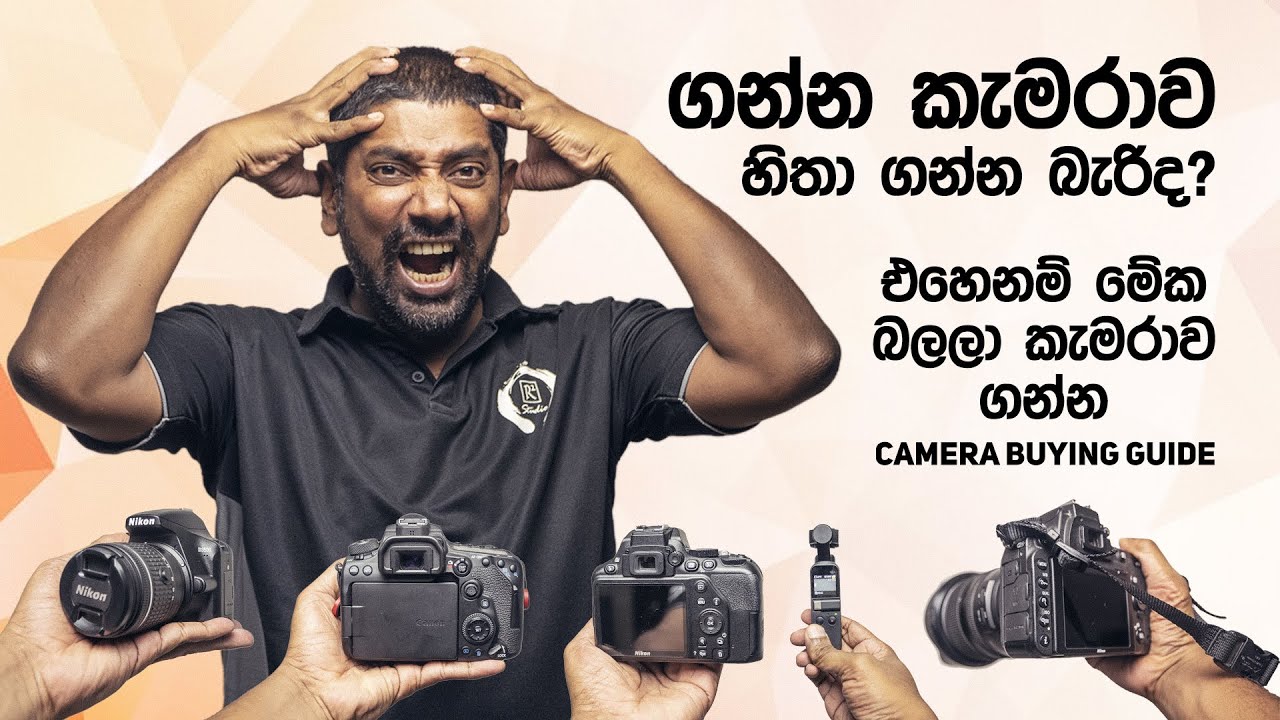Choosing the right camera can be a daunting task with so many options and factors to consider. In the “Camera Buying Guide – කැමරාවක් ගන්න ඉස්සෙල්ලා බලන්න ඕනේ කරුණු 15ක්” video by R2 Studio Masterclass, you’ll find a comprehensive breakdown of key considerations to keep in mind before making a purchase. From budget and purpose to image sensors and warranties, this guide will help you navigate the complexities of selecting the perfect camera.
The video is structured with clear chapters, each addressing a crucial point. You’ll learn about the importance of budget, understanding your specific needs, as well as exploring new and second-hand market options. By the end of the video, you’ll be equipped with the knowledge needed to make an informed decision.
Camera Buying Guide
Choosing a camera is an exciting endeavor, but it can be overwhelming due to the plethora of options available. This guide will help you navigate through crucial considerations to make an informed decision.
Budget
Determining Your Price Range
Setting a budget is the first step in your camera buying journey. Understand how much you are willing to spend on your new equipment. Entry-level DSLRs and mirrorless cameras can start around a few hundred dollars, while professional models with advanced features can go up to several thousand. Deciding your financial limits early will help narrow down your choices.
Considering Additional Expenses
While the camera body is a significant expense, don’t forget about additional costs. Think about lenses, memory cards, a sturdy camera bag, and possibly an external flash. These accessories can add up, so factor them into your overall budget. It’s always beneficial to allocate a portion of your budget to these necessary extras to ensure a complete setup.
Balancing Cost and Features
It’s essential to balance what you spend with the features you need. A higher price often correlates with better build quality, more advanced features, and greater durability. However, evaluate whether you need those extras. For instance, a camera with advanced autofocus and a fast burst rate might be more expensive but crucial for sports photography. On the other hand, these features might be overkill for everyday photos and videos.
Reason
Identifying Primary Use
Understanding why you need a camera will guide your purchase. Are you interested in landscape photography, sports, portraits, or vlogging? Each of these purposes can require different camera specifications. For example, if you’re into landscape photography, you might prioritize image quality and dynamic range, while a vlogger might need excellent video capabilities and a flip-out screen.
Considering Professional vs Amateur Needs
Assess whether your needs are professional or more hobbyist in nature. A professional photographer might need a full-frame camera for its superior image quality and low light performance. In contrast, an amateur could do well with an advanced point-and-shoot or an entry-level DSLR that offers good quality without a hefty investment.
Assessing Intended Subjects and Conditions
Think about the subjects and conditions you’ll be shooting in. Wildlife photographers often require cameras with fast autofocus and long battery life. In contrast, studio photographers might prioritize high-resolution sensors for detailed shots. If you’re shooting in low light often, a camera with good high ISO performance would be critical.
Learning
Understanding Camera Basics
Before making a purchase, familiarize yourself with the basics of how cameras work. Learn about terms like ISO, shutter speed, and aperture. Understanding these elements will not only assist in selecting a camera but also in using it effectively.
Researching Educational Resources
There is a wealth of information available online to help you learn about cameras. Websites, YouTube channels, and online courses offer extensive reviews, tutorials, and tips. A little time invested in research can go a long way in making sure you buy the right camera.
Exploring Community and Support Options
Join photography communities and forums. You can gain valuable insights and advice from experienced photographers. Many brands also have active user groups where you can seek advice, share your work, and learn new techniques.

This image is property of i.ytimg.com.
Kit Lens
Evaluating Included Lenses
Many cameras come with a kit lens, which is typically an 18-55mm zoom lens. Kit lenses are designed to be versatile, covering a broad range of focal lengths suitable for various types of photography. Evaluate if the included lens meets your immediate needs.
Understanding Versatility and Limitations
Kit lenses offer good versatility but come with limitations like slower apertures, which might not perform well in low light or provide a shallow depth of field. If the kit lens doesn’t meet your requirements, you might consider buying the camera body only and purchasing a different lens separately.
Comparing Kit Lens Quality with Other Lenses
While kit lenses are convenient, they often don’t match the performance of higher-end lenses. Research and compare the quality and performance of the kit lens with other available lenses. This comparison will help you decide if investing in additional lenses could be beneficial for your photography style.
Image Sensor
Types of Image Sensors
The type of image sensor greatly influences the camera’s performance. There are primarily two types: CCD (Charged Coupled Device) and CMOS (Complementary Metal-Oxide-Semiconductor). CMOS sensors are more common nowadays due to their lower power consumption and better data processing capabilities.
Sensor Size and Its Impact on Image Quality
Sensor size directly affects image quality. Full-frame sensors (35mm) offer superior quality and better low light performance but are often more expensive. APS-C sensors are smaller and generally found in mid-range DSLRs and mirrorless cameras, offering a good balance between quality and price. Micro Four Thirds sensors are smaller still, leading to more compact camera bodies and lenses.
Considering Low Light Performance
If you often shoot in low light conditions, sensor size and quality become even more important. Larger sensors with higher ISO capabilities perform better in low light, producing cleaner images with less noise. Look at the camera’s ISO range and check sample images to ensure it meets your low-light needs.
Technology
Comparing Mirrorless and DSLR
Both mirrorless and DSLR cameras have their pros and cons. DSLRs offer an optical viewfinder with no lag and generally better battery life due to their less power-hungry nature. Mirrorless cameras, on the other hand, are typically more compact, have faster shooting speeds, and provide advanced features like in-body stabilization and electronic viewfinders with live exposure previews.
Considering Autofocus Systems
Good autofocus (AF) performance is crucial, especially if you shoot fast-moving subjects. Mirrorless cameras are catching up to DSLRs in terms of AF performance, with some even surpassing them. Check for features like phase detection and the number of AF points to ensure quick and accurate focusing.
Evaluating Image Stabilization Technologies
Image stabilization helps in reducing camera shake, allowing you to shoot at slower shutter speeds without blurring. In-body image stabilization (IBIS) is a feature in some mirrorless cameras that stabilizes the sensor itself. Lens-based stabilization is found in some lenses and is beneficial if your camera body doesn’t have IBIS.
Package Deals
Assessing Value of Included Accessories
Package deals often come with a range of accessories, including extra batteries, memory cards, tripods, and more. Evaluate the quality and necessity of these extras. Sometimes, the added accessories are of low quality or redundant for your needs.
Comparing Package Deals vs Individual Purchases
While package deals may seem attractive, compare the cost of buying items individually. Sometimes, you might find better quality accessories by purchasing separately. Ensure that you aren’t sacrificing the quality of important components like lenses and memory cards for the perceived convenience of a package deal.
Understanding Potential Long-Term Savings
Consider the long-term savings a package deal might offer. If the included accessories are things you would purchase eventually, buying them in a bundle could be more economical. Balance immediate needs against long-term usage to make a wise financial choice.
Lenses
Understanding Lens Compatibility
Ensure that the lenses you are interested in are compatible with the camera body you choose. Each camera manufacturer typically has a specific mount type. For example, Canon’s EF and RF, Nikon’s F and Z, or Sony’s E-mount. Adapters are available for mixing systems, but they might affect performance.
Evaluating Prime vs Zoom Lenses
Prime lenses have a fixed focal length and are often preferred for their sharpness and faster apertures, which are great for low light and creating a shallow depth of field. Zoom lenses, on the other hand, offer flexibility in framing and composition as they cover a range of focal lengths. Think about which will suit your shooting style better.
Considering Future Lens Additions
As you progress in your photography journey, you may want to expand your lens collection. Consider the availability and range of lenses for the camera system you choose. Investing in a system with a broad and accessible range of lenses will future-proof your investment.
Second-Hand Market
Evaluating Condition and Usage
Buying second-hand can be a cost-effective way to get quality gear. However, evaluate the condition of the camera carefully. Check for signs of heavy use like shutter count, physical damage, and functionality of all buttons and dials. If possible, test the camera before purchasing.
Understanding Return Policies and Warranties
Look for sellers who offer return policies or warranties on their used equipment. This provides a safety net should the camera have any issues that weren’t apparent during the initial inspection. Many reputable retailers offer a limited warranty even on second-hand gear.
Researching Reliable Sellers
Purchase from reputable sellers or platforms with good reviews. Avoid deals that seem too good to be true, as they often are. Look for sellers with a history of positive feedback and clear descriptions of their items.
Conclusion
Summarizing Key Points
Choosing the right camera involves balancing your budget with the features and capabilities you need. Consider your primary use, whether your needs are professional or hobbyist, and the subjects and conditions you’ll be shooting in. Learn the basics of camera operation and research extensively to make an informed choice.
Providing Final Recommendations
Start with a clear budget and be aware of additional expenses like lenses and accessories. Understand the types of cameras available, such as DSLR vs mirrorless, and their respective advantages. Evaluate technological features like autofocus and image stabilization, and consider the long-term potential of your chosen camera system.
Encouraging Informed Decision-Making
Make sure to do your homework—research, reach out to the community for advice, and test the cameras if possible. A well-researched decision not only ensures that you get value for your money but also enhances your photography experience. Happy shooting!

